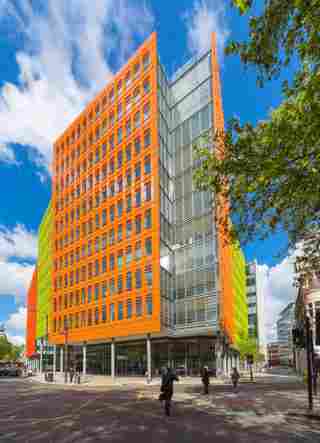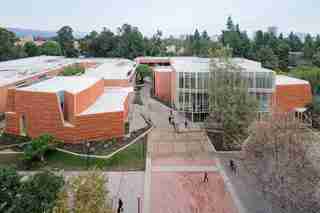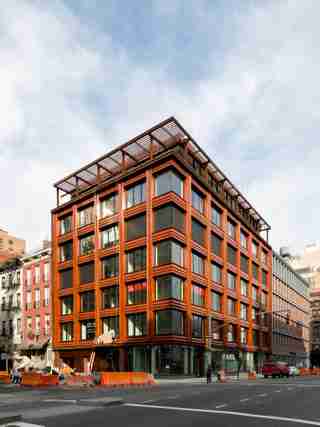July 02,2022
Cutting-Edge Buildings That Take Terra-Cotta to New Heights
by David Stewart

Terra-cotta (meaning “baked earth” in Italian) has long found its way into the architecture of the day. For centuries, the light and inexpensive material was formed into rust-hued tiles for humble roofs. In the later 1800s, it was molded into decorative details on the façades of elaborate Arts and Crafts buildings. And now, contemporary architects have returned to the storied clay-based ceramic as an accent for statement-making modern buildings. The following slideshow explores some of these forward-looking structures and their innovative use of the simple material.
Glazes can transform natural terra-cotta, with its russet hue and earthy texture, into sleek, colorful tilework, seen here on the Central St. Giles Court in London by Renzo Piano Workshop. The mixed-use development features a façade made with steel, glass and vibrant tiles of glazed terra-cotta cast with a cross-hatch pattern.

A fresh interpretation of brick architecture, the distinctly modern Schoenberg Music Building at UCLA uses terra-cotta tiles organized in geometric lines to blend in with the stately buildings that surround it. Designed by Kevin Daly Architects, the structure houses suites for all aspects of the university’s music program, from classrooms to performance spaces.

A grid of terra-cotta frames the glass walls of 10 Bond Street, a new residential building by Selldorf Architects in New York’s trendy NoHo neighborhood. Glazed for a deep red finish, the terra-cotta pays homage to the older brick buildings that surround it.
Designed to resemble a lotus flower in bloom, the Nan Tien Institute in Wollongong, Australia, features rotating terra-cotta tiles on part of its exterior. The building, a Buddhist cultural center devised by the Woods Bagot firm, achieves greater serenity with the wavelike patterns formed by the tiles.
Two walls of terra-cotta, wrapped in glass, encase the National Museum of American Jewish History in Philadelphia. Punctuated by windows, the terra-cotta creates a riblike effect, highlighting the pleasing linearity of the building designed by Polshek Partnership (now Ennead Architects).
Framed by concrete walls, the solid and slatted terra-cotta exterior of the Bayside Police Station in Sandringham, Australia, welcomes visitors to the building, which was designed by the architecture firm Francis-Jones Morehen Thorp.
Designed by Kohn Pedersen Fox Associates, the Ross School of Business at the University of Michigan in Ann Arbor features fluted terra-cotta tiles on its façade as a warm counterpoint to the structure’s glass portions.
Environmentalist Joost Bakker took a more playful approach to terra-cotta architecture, surrounding his family’s home in Monbulk, Australia, with a façade of steel framework, in which he placed small terra-cotta flower pots, each housing a strawberry plant.
Ribs of terra-cotta form a brise-soleil around the glass encasement of the Payette-designed Dana Mohler-Faria Science & Mathematics Center at Bridgewater State University in Massachusetts. In addition to blending in better with the environment, the terra-cotta “baguettes” shield the interior from too much sunlight.
Terra-cotta tiles lend a strong vertical visual element to the South Molton Street Building in London by DSDHA. Glazed for a dark red hue, the tiles form irregular waves around the building’s façade that break every so often to reveal glass or foliage.






